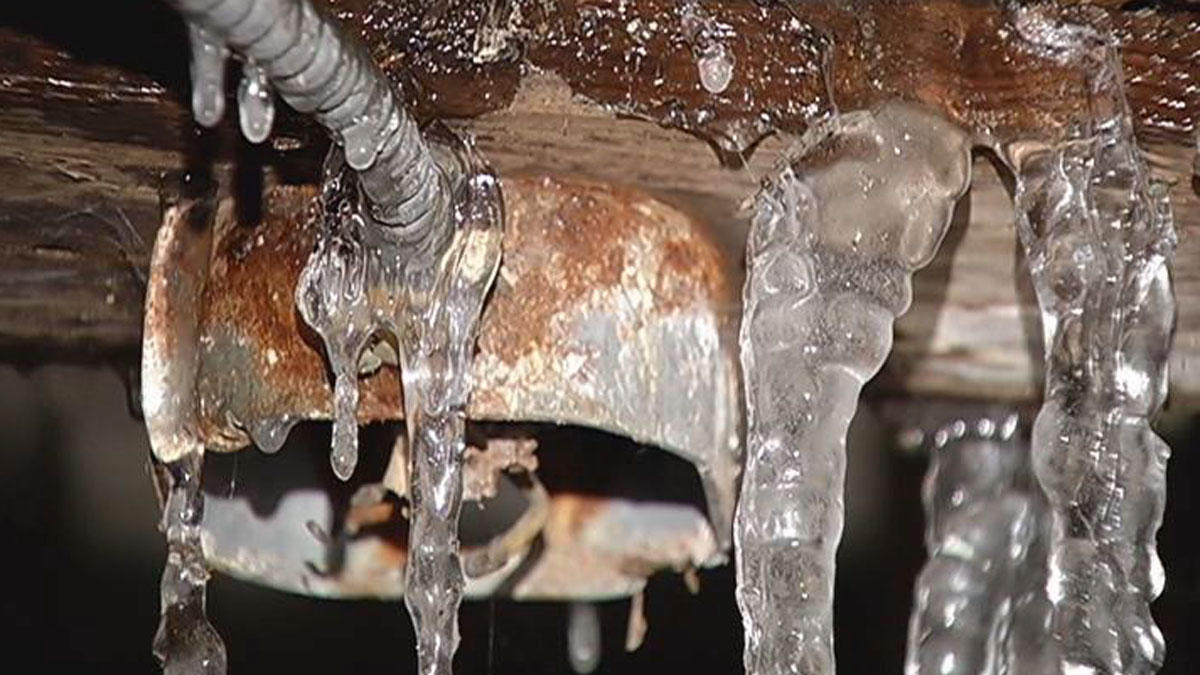Avoid Frozen Pipes in Winter: Professional Advice
Avoid Frozen Pipes in Winter: Professional Advice
Blog Article
How do you feel on the subject of Helpful Tips to Prevent Frozen Pipes this Winter?

Cold weather can wreak havoc on your plumbing, specifically by freezing pipelines. Right here's how to prevent it from taking place and what to do if it does.
Introduction
As temperatures decline, the threat of frozen pipelines rises, possibly leading to costly fixings and water damages. Recognizing just how to avoid frozen pipelines is critical for homeowners in cool climates.
Prevention Tips
Shielding at risk pipes
Cover pipelines in insulation sleeves or make use of heat tape to secure them from freezing temperature levels. Focus on pipelines in unheated or exterior locations of the home.
Heating strategies
Maintain indoor areas sufficiently warmed, specifically locations with plumbing. Open cupboard doors to permit cozy air to flow around pipelines under sinks.
Just how to recognize frozen pipelines
Seek decreased water flow from taps, uncommon odors or sounds from pipelines, and visible frost on subjected pipelines.
Long-Term Solutions
Architectural adjustments
Think about rerouting pipelines far from outside wall surfaces or unheated areas. Add added insulation to attics, basements, and crawl spaces.
Upgrading insulation
Buy high-grade insulation for pipelines, attics, and walls. Proper insulation aids keep constant temperature levels and minimizes the danger of icy pipelines.
Shielding Outside Plumbing
Garden hose pipes and outdoor taps
Separate and drain pipes yard tubes before winter months. Mount frost-proof spigots or cover exterior taps with shielded caps.
Comprehending Frozen Pipes
What creates pipelines to ice up?
Pipes freeze when exposed to temperatures below 32 ° F (0 ° C) for extended durations. As water inside the pipelines ices up, it expands, putting pressure on the pipe wall surfaces and possibly triggering them to burst.
Threats and problems
Frozen pipelines can cause water interruptions, property damages, and expensive repair work. Burst pipelines can flooding homes and trigger substantial structural damages.
Indications of Frozen Pipeline
Identifying icy pipes early can stop them from rupturing.
What to Do If Your Pipelines Freeze
Immediate actions to take
If you believe frozen pipes, maintain faucets available to ease pressure as the ice melts. Utilize a hairdryer or towels taken in hot water to thaw pipelines gradually.
Verdict
Preventing icy pipelines needs aggressive steps and fast reactions. By recognizing the reasons, indications, and safety nets, property owners can protect their pipes during winter.
5 Ways to Prevent Frozen Pipes
Drain Outdoor Faucets and Disconnect Hoses
First, close the shut-off valve that controls the flow of water in the pipe to your outdoor faucet. Then, head outside to disconnect and drain your hose and open the outdoor faucet to allow the water to completely drain out of the line. Turn off the faucet when done. Finally, head back to the shut-off valve and drain the remaining water inside the pipe into a bucket or container. Additionally, if you have a home irrigation system, you should consider hiring an expert to clear the system of water each year.
Insulate Pipes
One of the best and most cost-effective methods for preventing frozen water pipes is to wrap your pipes with insulation. This is especially important for areas in your home that aren’t exposed to heat, such as an attic. We suggest using foam sleeves, which can typically be found at your local hardware store.
Keep Heat Running at 65
Your pipes are located inside your walls, and the temperature there is much colder than the rest of the house. To prevent your pipes from freezing, The Insurance Information Institute suggests that you keep your home heated to at least 65 degrees, even when traveling. You may want to invest in smart devices that can keep an eye on the temperature in your home while you’re away.
Leave Water Dripping
Moving water — even a small trickle — can prevent ice from forming inside your pipes. When freezing temps are imminent, start a drip of water from all faucets that serve exposed pipes. Leaving a few faucets running will also help relieve pressure inside the pipes and help prevent a rupture if the water inside freezes.
Open Cupboard Doors
Warm your kitchen and bathroom pipes by opening cupboards and vanities. You should also leave your interior doors ajar to help warm air circulate evenly throughout your home.

Do you enjoy reading up on Helpful Tips to Prevent Frozen Pipes this Winter? Put a remark down below. We would be glad to listen to your thinking about this review. In hopes that you visit us again soon. Are you aware of somebody who is in to the subject? Take a moment to share it. Thanks a bunch for being here. Return soon.
Explore Report this page